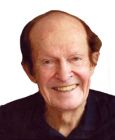
The philosopher, sociologist and psychologist George Herbert Mead once remarked, “A person who is saying something is saying something to himself what he is saying to others; otherwise he does not know what he is talking about.”
Yes, we talk silently to ourselves, and ourselves silently may listen, but sometimes silently talk back. It’s a way of verbally examining pros and cons before embarking on a possible path or behavior.
Conflicts arise when “ourselves” may not just talk back, but ignore what we are saying. An example might be when we tell ourselves not to indulge in more than two drinks at a social gathering, but ourselves charge right ahead.
According to Mead’s model of the mind, the individual is conscious of himself not directly but only indirectly, from the generalized viewpoint of others toward himself. Within the consciousness of self are two fields, the “I” and the “me.” The “I” arose from taking on the generalized attitude of others, but contained a certain impulsive and uncontrollable conduct; while the “me” acted as a censor and prescribed the sort of expression which should take place.
Sigmund Freud developed a model with three fields--the superego, ego, and id. The superego is the basis for social control, and seen as the censor, similar to Mead’s “me.” The id is largely unconscious and seeks to gratify basic instincts, reflecting impulsive emotional behavior; while the ego is caught up in the middle, trying to mediate the perpetual conflict between the goals of the id and superego.
Freud’s three-part model became an immediate success in the late 1920s and 1930s, partly because of its simplicity and appeal to playwrights who could explain adult love and hate in terms of conflicted childhood emotions, and screenwriters could validate the gangster’s rage and fury as a carryover of childhood revenge upon gunning down a G-Man as a fleeting substitute for one’s father.
Although Freud’s psychoanalysis promised both self-understanding and strengthening of one’s ego vis-à-vis the powerful superego and rebellious id, it would take years to reconstruct the conflicting parts and thus became an expensive undertaking. Moreover, there were multiple psychoanalytic theorists beginning to break with Freud, as well as emerging stimulus-response behavior-based therapies.
Eric Berne, came to Freud’s rescue by offering Transactional Analysis (TA), a three-part model composed of the adult (ego), child (id), and parent (superego). TA was particularly popular in the 1950s before behavior-based therapies became the standard. Behavior-based therapies offered a quick fix, and therapists aligned their diagnoses with the DSM categories of symptoms, enabling insurance carriers to base the number of paid sessions upon symptomatic categories.
Psychiatrists renounced the two and three-part models as “unscientific,” yet so were their DSM categories, since the symptoms were arbitrarily perceived and pasted onto their clients. There was no underlying theory of problem formation and change behavior. Cognitive Behavioral Therapy is based on the client’s challenging the conscious response of self-devaluation from an unconscious negative stimulus. Although the conscious thought of self-devaluation may be temporarily interrupted and blocked, the unconscious stimulus remains, only to signal a self-devaluative response at some inopportune time in the future.
In an attempt to provide scientific-based therapies, many psychiatrists abandoned theoretical models and embraced the biochemical approach. The National Institute of Mental Health (NIMH) spent millions of research dollars on various drugs and combinations of drugs to cope with mental disorders. Talk therapy was tolerated, but psychiatrists were becoming known primarily for prescribing drugs.
About seven years ago, the NIMH not only stopped funding research for drugs but also refused to acknowledge DSM categories, instead favoring biological mechanisms (genes, cells, and brain circuits), along with trans-diagnostic talk therapies. The response from university research centers has been to change the conversation to genetics. Yet, it is one thing to find the genes responsible for having a propensity for depression and suicide, but another to offer an effective therapeutic intervention.
Recent research at UC San Francisco has identified a brain circuit between the amygdala and hippocampus that becomes particularly active when people are experiencing high levels of stress. While memories stored in the hippocampus are accessible to consciousness, memories residing in the amygdala are largely unconscious. This finding suggests that early traumatic memories laid down in the amygdala may be in conflict with hippocampal censorship.
As both a sociologist and psychologist, Mead is cited as both the founder of social psychology and American pragmatism. From a pragmatic perspective, if a therapeutic intervention is highly effective over the long-term, it need not be science-based, but measures of effectiveness do need to meet empirical standards for both validity and reliability.
This blog was co-published with PsychResilience.com




